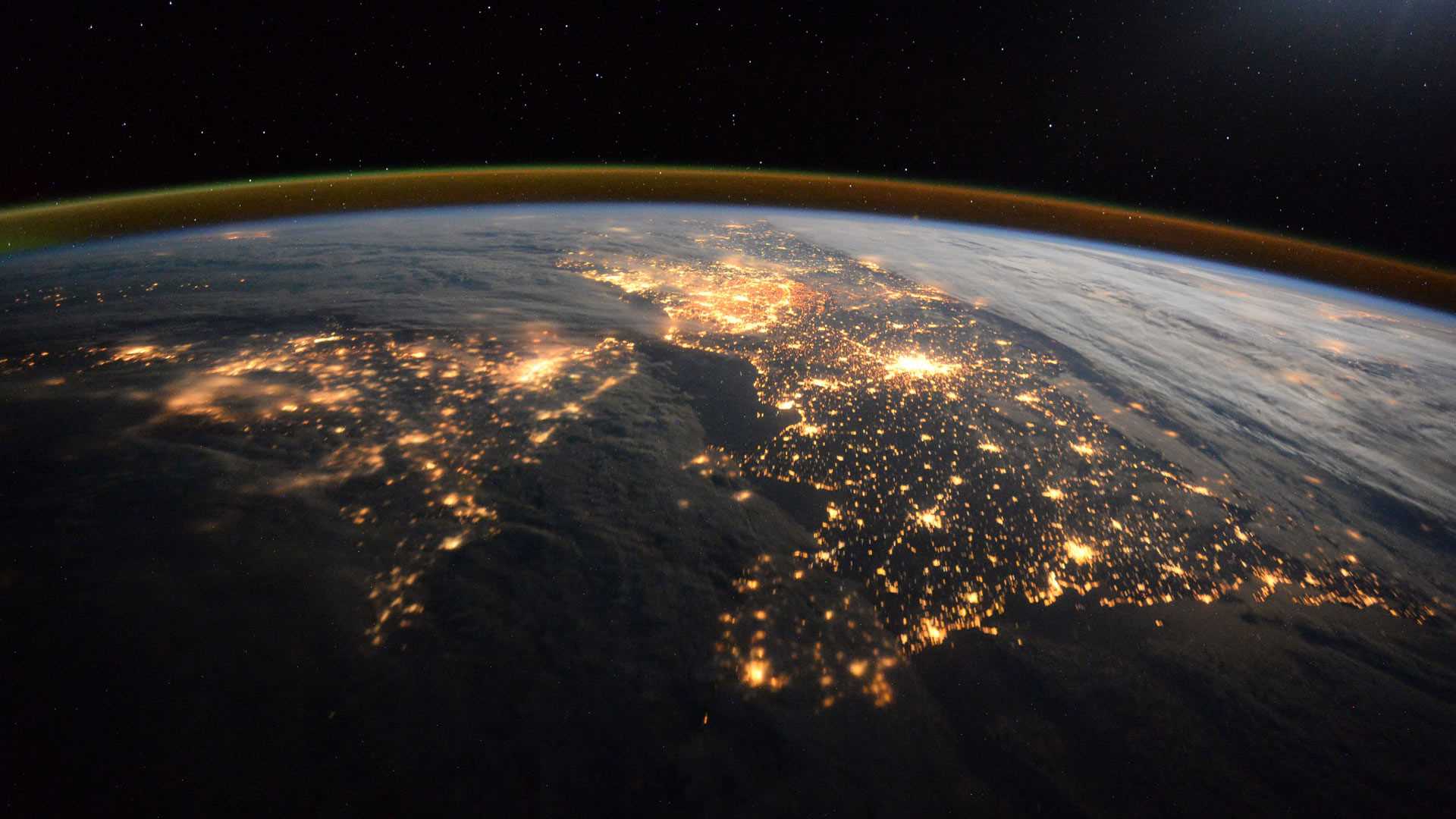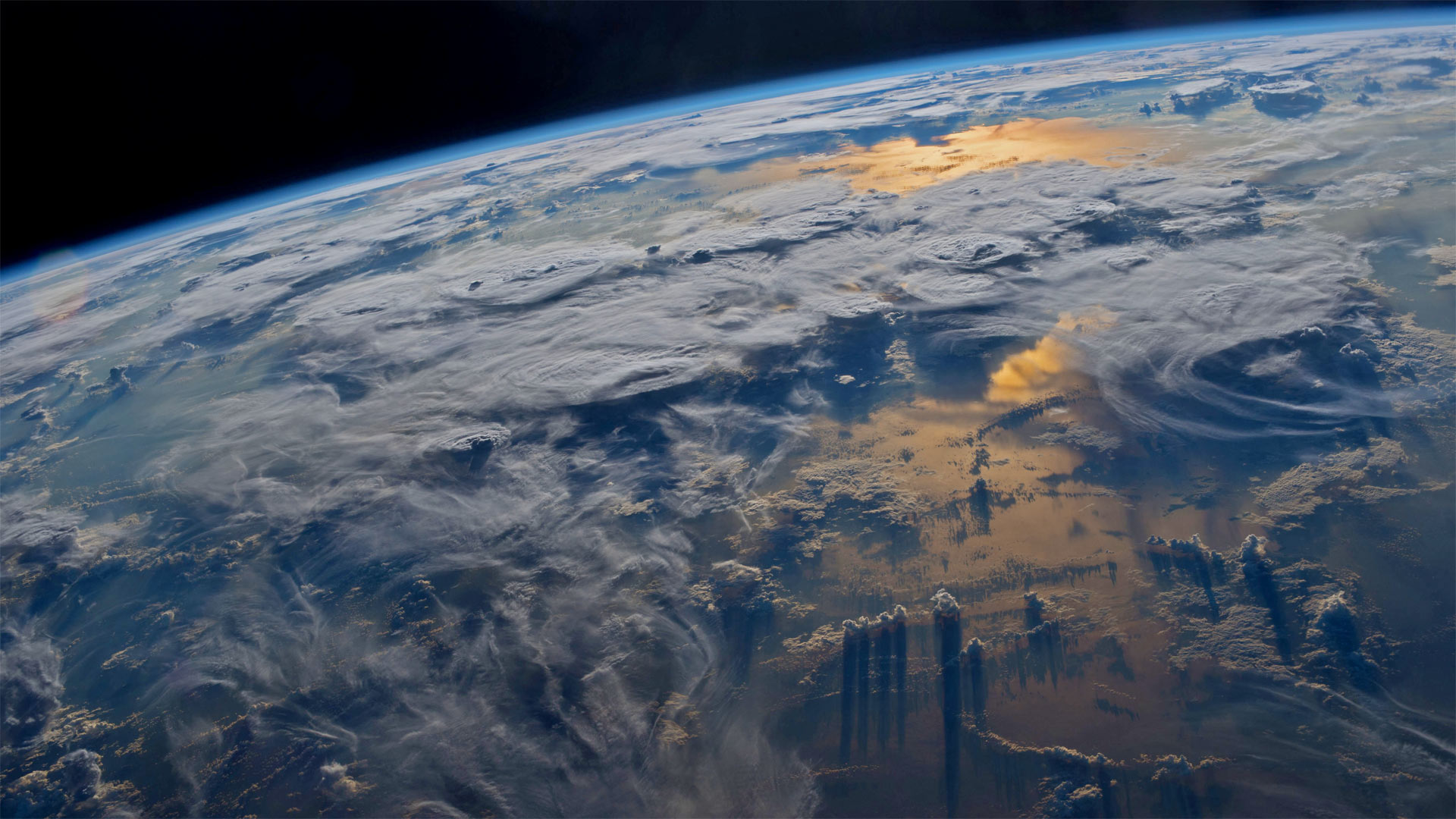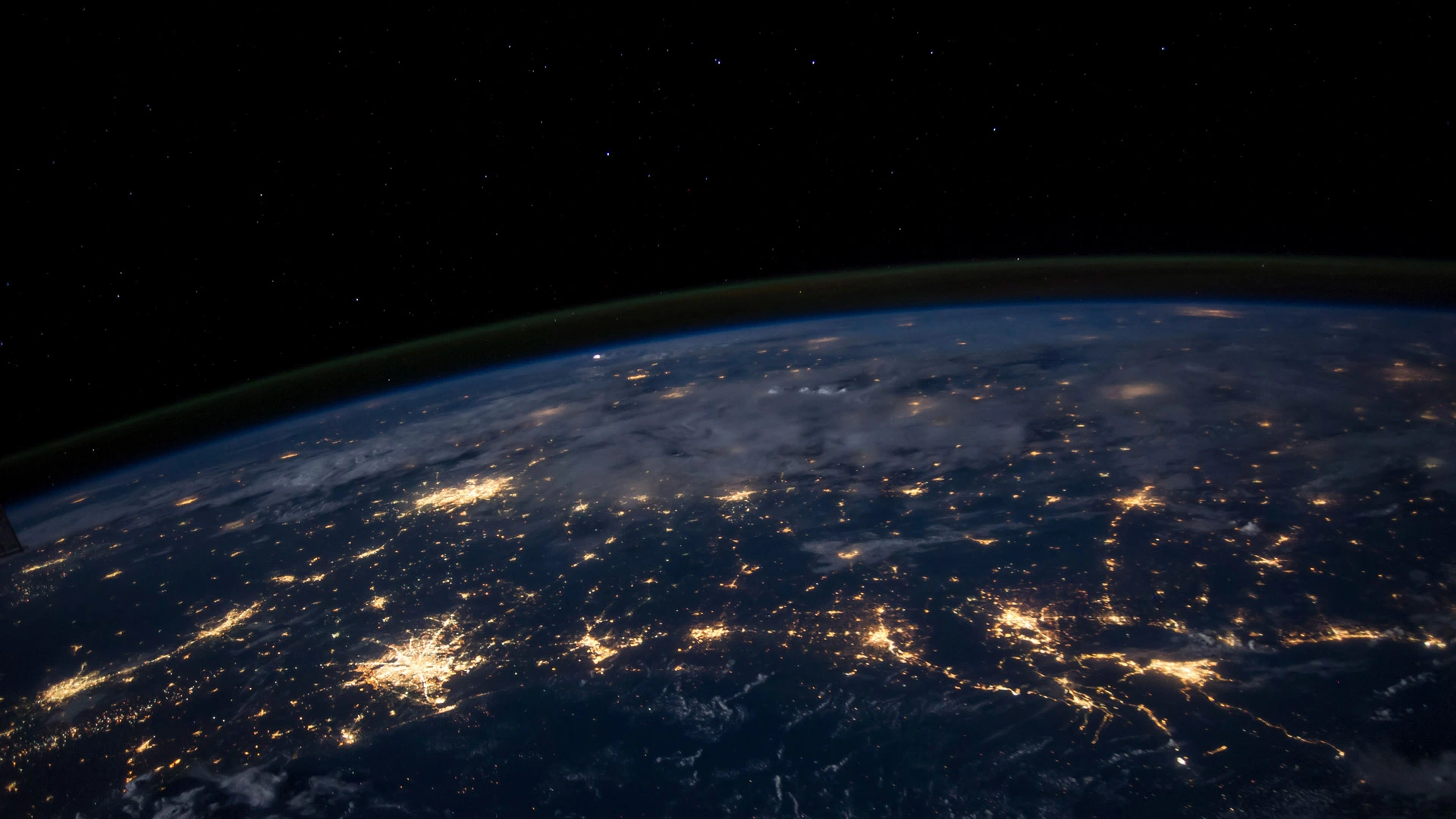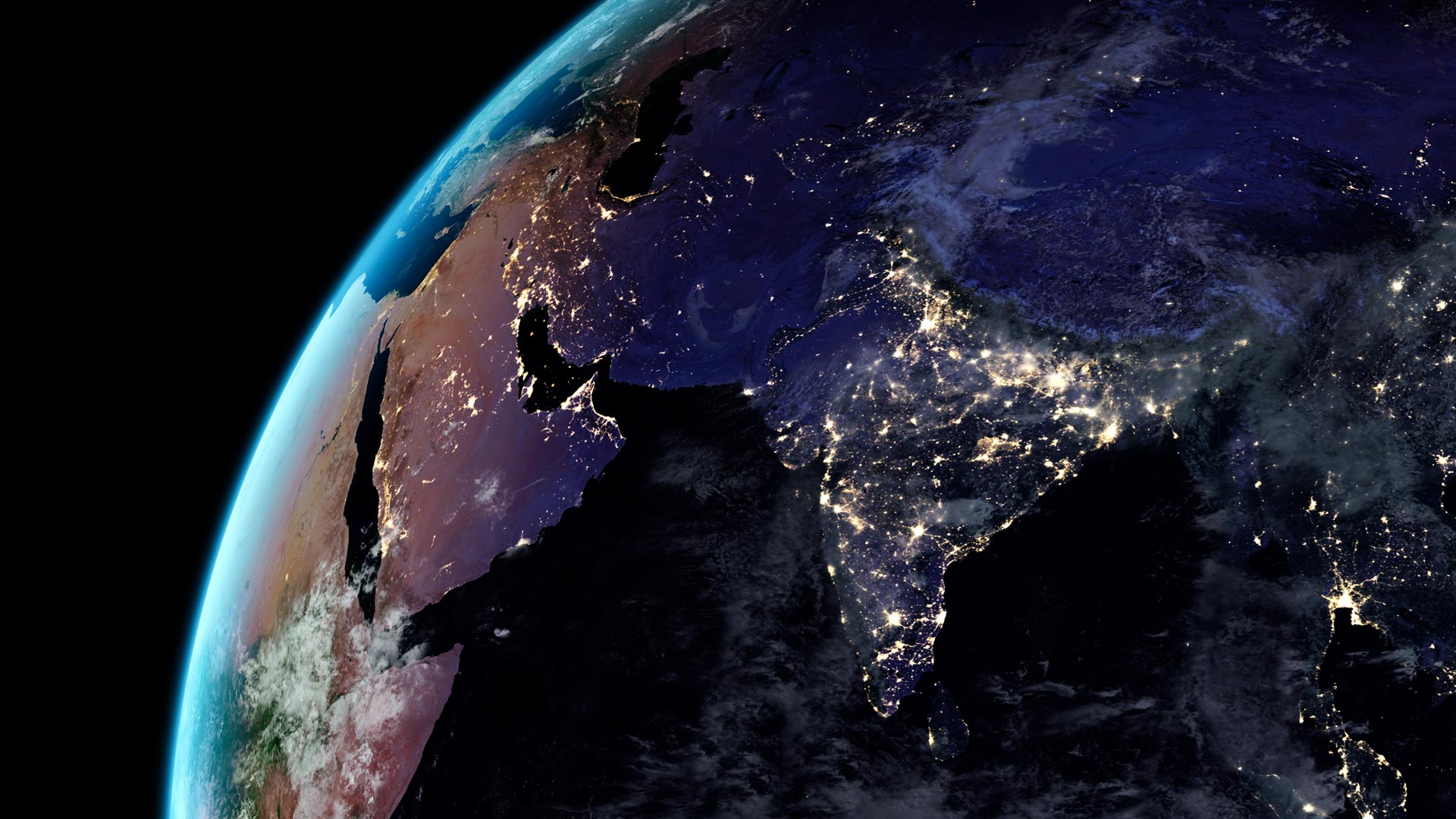从地球上空225英里处俯瞰墨西哥湾沿岸各州的夜间景象 Nighttime view of the Gulf Coast states from 225 miles above Earth (© Stocktrek Images/Getty Images)
从地球上空225英里处俯瞰墨西哥湾沿岸各州的夜间景象 Nighttime view of the Gulf Coast states from 225 miles above Earth (© Stocktrek Images/Getty Images)
巨大的成功 A stratospheric success
墨西哥湾沿岸的夜景
看不见的气体、老式发胶和卫星有什么共同点?它们都在历史上最伟大的环境复苏之一中发挥了作用。从225英里高空俯瞰,墨西哥湾沿岸如同一片星辰——点点灯光散落在黑暗中。但真正让这一景象成为可能的,却是肉眼无法看见的:臭氧层,它默默地保护着下方的一切免受太阳紫外线的侵害。到了20世纪80年代,这层屏障正迅速变薄——被曾用于制冷和气溶胶产品的化学物质所破坏。解决方案?一项全球协议。1987年签署的《蒙特利尔议定书》促使臭氧层破坏物质迅速被淘汰。如今,卫星数据显示南极上空的臭氧层空洞正在缩小。科学家认为,到本世纪中叶,它可能完全愈合。
9月16日,我们迎来国际保护臭氧层日——这是一个庆祝科学、全球合作与共同意志的节日。它提醒我们,再小的分子也可能产生巨大的影响。但它也证明,只要采取正确的行动,即使是肉眼看不见的损害也能被修复。
Nighttime view over the Gulf Coast
What do invisible gases, vintage hairspray, and satellites have in common? They all played a role in one of the greatest environmental comebacks in history. Seen from 225 miles above, the Gulf Coast glows like a constellation—clusters of light scattered across the dark. But what truly makes this view possible can't be seen: the ozone layer, silently shielding everything below from the sun's ultraviolet rays. By the 1980s, that shield was thinning fast—damaged by chemicals once used in refrigeration and aerosol products. The solution? A global pact. The Montreal Protocol, signed in 1987, led to a swift phase-out of ozone-depleting substances. Today, satellites show that the hole over Antarctica is shrinking. Scientists believe it could be fully healed by mid-century.
On September 16, we mark the International Day for the Preservation of the Ozone Layer—a celebration of science, global cooperation, and collective will. It's a reminder that no molecule is too small to have a massive impact. But it's proof, too, that with the right action, even invisible damage can be undone.
从国际空间站拍摄的地球 Earth seen from the International Space Station (© Tim Peake/ESA/NASA via Getty Images)

从国际空间站拍摄的地球 Earth seen from the International Space Station (© Tim Peake/ESA/NASA via Getty Images)
此景只应天上有 A view that's out of this world
尤里之夜
1961年4月12日,宇航员尤里·加加林成为人类历史上前往太空的第一人,举世震惊。他乘坐“东方太空3KA”号,在两小时之内完成了绕地球一周的飞行。此后不到一个月的时间,水星计划的宇航员艾伦·谢泼德成功飞往太空,成为第一个进入太空的美国人。今天这张照片向我们展示了从国际空间站拍摄的地球,从太空回望地球的风景,依然魅力十足,星光璀璨俨然一副艺术品。每年的4月12日,是纪念加加林的“尤里之夜”,也被称为“世界太空派对”,这一天是全球天文学爱好者的狂欢。
Earth seen from the International Space Station
On April 12, 1961, Russian cosmonaut Yuri Gagarin astounded the world by becoming the first person to travel to outer space. In less than two hours, Gagarin completed a full orbit of the Earth in the Vostok 3KA spacecraft. Less than a month later, Mercury astronaut Alan Shepard became the first American in space. The spectacle of looking back at Earth from space has not lost its charm, as you can see in today's picture taken from the International Space Station. Also known as the 'World Space Party,' Yuri's Night is a global celebration of astronomy and a reflection on how space exploration can unite people in a divided world.
从国际空间站看到的地球 Earth as seen from the International Space Station (© JSC/NASA)

从国际空间站看到的地球 Earth as seen from the International Space Station (© JSC/NASA)
如此接近,却又如此遥远
地球的近日点 / 从国际空间站看地球
今天是地球的近日点,由于地球绕太阳公转的轨道是椭圆形的,所以冬至后两周,地球距离太阳最近。你可能有疑问:地球离太阳最近的时候,为什么我们没觉得更热?其实,这是因为近日点的时候地球所接受到的太阳辐射只比平时强了大约7%,这种微小的差异对地球天气的影响并不大。
Earth as seen from the International Space Station
We've reached perihelion! Two weeks after winter solstice the Earth's orbit is closer to the sun than at any other time of year—a result of the Earth's elliptical orbit. You may think, 'If we're so close to the sun, why can't I feel the heat?' Well, that's because we're only receiving about 7% more solar energy than normal, which doesn't really have much impact on the weather.
宇航员杰夫·威廉姆斯在国际空间站拍摄到的地球 Earth from the International Space Station, photographed by astronaut Jeff Williams (© Jeff Williams/NASA)

宇航员杰夫·威廉姆斯在国际空间站拍摄到的地球 Earth from the International Space Station, photographed by astronaut Jeff Williams (© Jeff Williams/NASA)
In orbit for Yuri's Night
Sixty years ago today at around 9 AM Moscow time, Yuri Gagarin became the first human to get a view of Earth from space (like this one captured from the ISS by astronaut Jeff Williams). With the famous utterance 'Poyekhali!' ('Off we go!'), Gagarin launched into low Earth orbit in his Vostok 3KA spacecraft, making history in less than two hours with a complete trip around the planet. Landing in rural Russia, he became an instant worldwide celebrity—that is, after convincing puzzled locals he was a comrade and not a space alien.
Of course, with elation came deflation: Gagarin's flight dashed NASA's hopes of making an American the first person in space. But the Soviets' success kicked the Space Race into high gear, setting the stage for a spate of US spaceflights and eventually that first trip to the moon. Now that competition in spaceflight is less bitter, 'Yuri's Night' is observed today by astronomy lovers of all nationalities, celebrating how space exploration can unite the world. It's even a double holiday now: The first US Space Shuttle mission coincidentally launched on Yuri's Night in 1981.
在尤里之夜的轨道上
60年前的今天,莫斯科时间上午9点左右,尤里·加加林成为第一个从太空看到地球的人(就像宇航员杰夫·威廉姆斯从国际空间站拍到的这张照片)。用著名的“Poyekhali!”(‘出发!’)年,加加林乘坐他的vostok3ka飞船进入近地轨道,在不到两个小时的时间内完成了绕地球的完整旅行,创造了历史。在俄罗斯农村登陆后,他立刻成为了世界名人,也就是说,在说服困惑的当地人他是同志而不是外星人之后。
当然,随之而来的是通货紧缩:加加林的飞行粉碎了美国宇航局让美国人成为太空第一人的希望。但苏联的成功将太空竞赛推向了高潮,为美国的一系列太空飞行以及最终的首次月球之旅奠定了基础。如今,航天领域的竞争已不那么激烈,各族天文爱好者今天都在庆祝太空探索如何团结世界。现在甚至已经是双休日了:1981年尤里之夜,美国第一次航天飞机任务巧合地发射升空。

